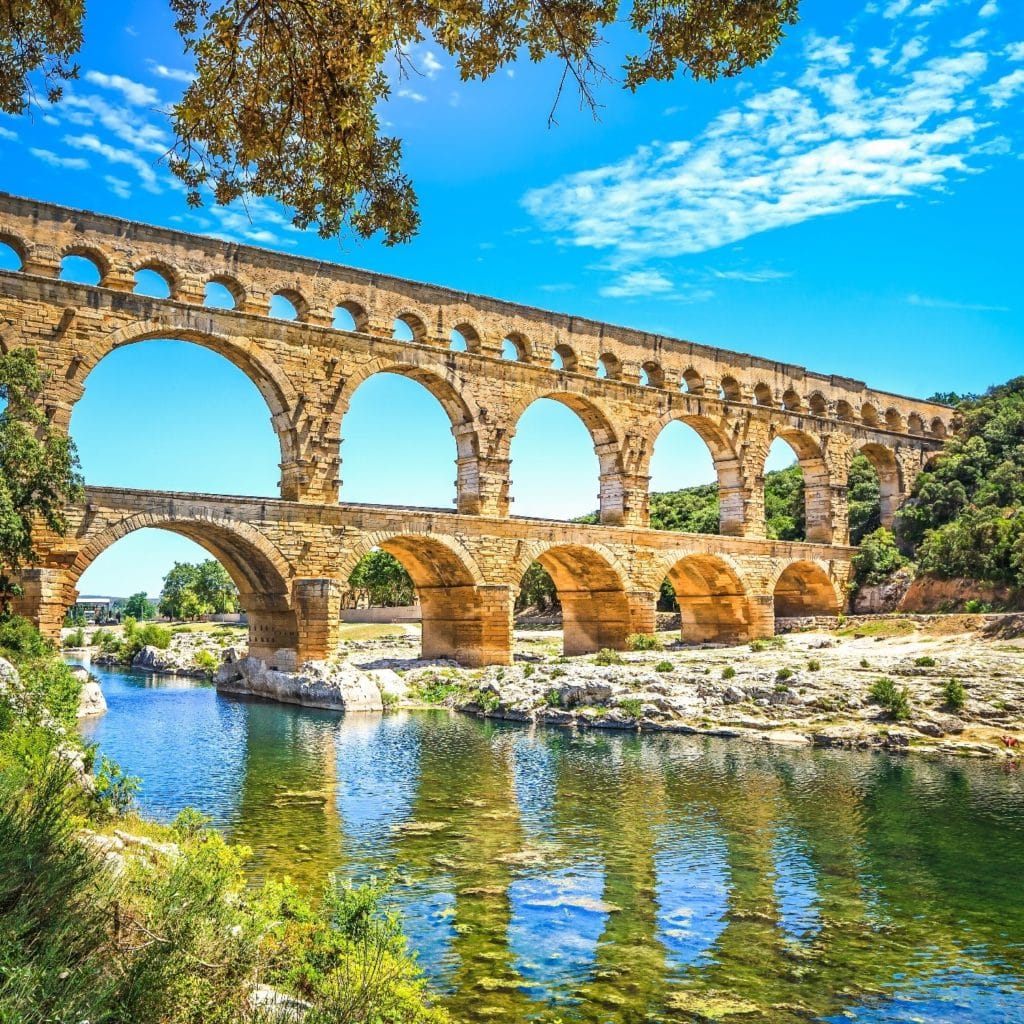
If you’re like most people, when you hear about Italy your brain thinks of pizza, pasta, or espresso. One thing that you might not think about is engineering! Have you ever heard the phrase, “all roads lead to Rome”? That’s because the Ancient Romans took the art of logistics to another level. They revolutionized construction by developing new techniques and materials. The accomplishments of Roman engineers improved the daily lives of Romans. Their inventions helped Rome maintain dominance in Europe for centuries. In this blog post, we’ll explore how the Ancient Romans revolutionized the engineering of bridges and look at some of the most famous Italian bridges that are still in use today.
The Foundation of an Empire
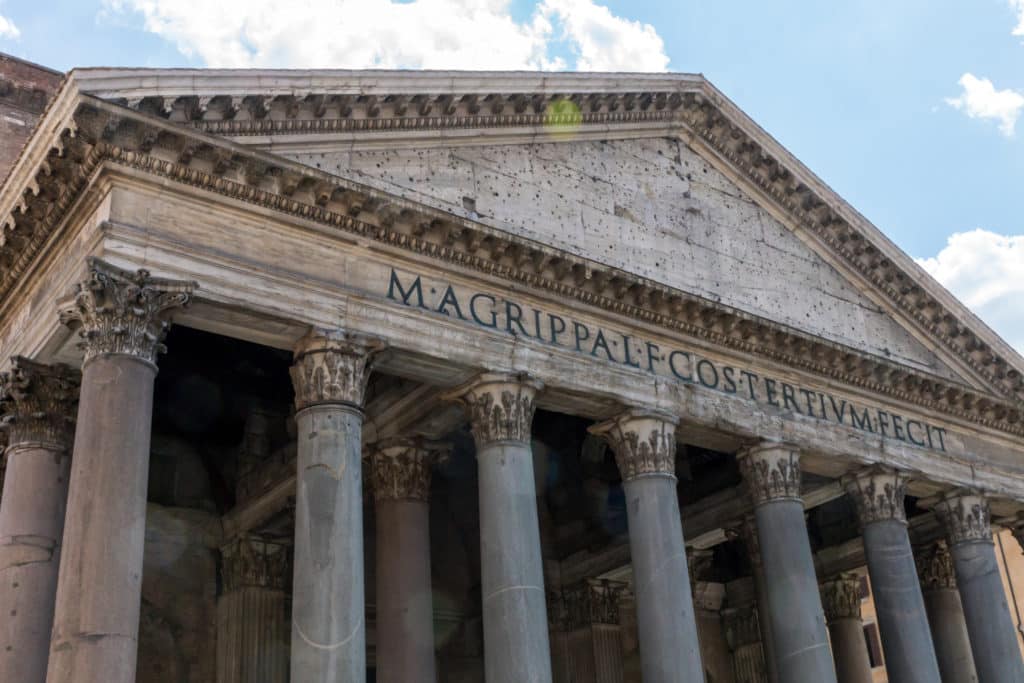
In Italian, the word for ‘bridge,’ is ponte. A bridge is an engineered structure that provides passage over obstacles such as bodies of water, valleys, or rough terrain. In the beginning, bridges were simple and consisted of natural resources such as wood and stone. Roman engineers improved the structural integrity of their bridges with mortar. This mortar, – called pozzolana, was an improved cement that consisted of water, sand, lime, and the secret ingredient – volcanic rock. A special feature of Roman cement is its resistance to erosion due to volcanic rock.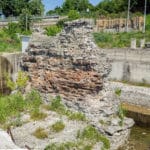 This cement replaced dirt fillings that were slowly, but constantly, dissolved by rain. Additionally, this volcanic rock material was used to construct centuries-old buildings such as the Pantheon in Rome. Another defining feature of successful Roman bridges was their use of the arch. By using this style of architecture, load forces on the bridges were channeled to move along the curve of the arch. This engineering allowed them to create the aqueduct bridges. The aqueducts used gravity to carry thousands of tons of water over 500 miles to Rome every day. Roman engineers progressed so far that they concluded that a well-built stone arch doesn’t even need mortar to connect the parts. The friction forces, from the compression, stabilize the structure. The hundreds of Roman-engineered bridges still standing today are a testament to their magnificent strength. Let’s look at some!
This cement replaced dirt fillings that were slowly, but constantly, dissolved by rain. Additionally, this volcanic rock material was used to construct centuries-old buildings such as the Pantheon in Rome. Another defining feature of successful Roman bridges was their use of the arch. By using this style of architecture, load forces on the bridges were channeled to move along the curve of the arch. This engineering allowed them to create the aqueduct bridges. The aqueducts used gravity to carry thousands of tons of water over 500 miles to Rome every day. Roman engineers progressed so far that they concluded that a well-built stone arch doesn’t even need mortar to connect the parts. The friction forces, from the compression, stabilize the structure. The hundreds of Roman-engineered bridges still standing today are a testament to their magnificent strength. Let’s look at some!
Ponte Vecchio – Florence
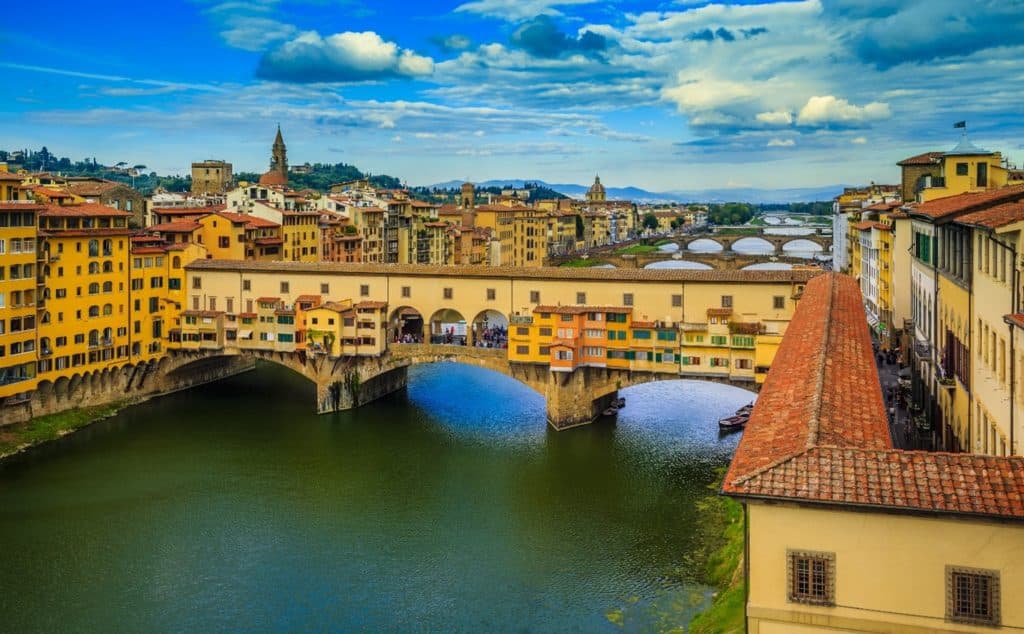
Ponte Vecchio is Italian for ‘Old Bridge’, and it certainly lives up to its name. Completed in 1345 by Taddeo Gaddi, Ponte Vecchio is the first segmental arch bridge constructed in the Western World. A segmental arch has a circular arc of fewer than 180 degrees. This style offered less obstruction and freer passage to floodwaters of the Arno River. Perhaps one of the most defining characteristics of Ponte Vecchio is the shops it has hosted since the 13th century. Previously occupied by foul-smelling butchers and fishmongers, in 1593, Duke Ferdinand I decreed that only jewelers and goldsmiths were allowed to have shops on the bridge. Today, the bridge still hosts a collection of 48 luxury jewelry stores.
Ponte di Rialto – Venice
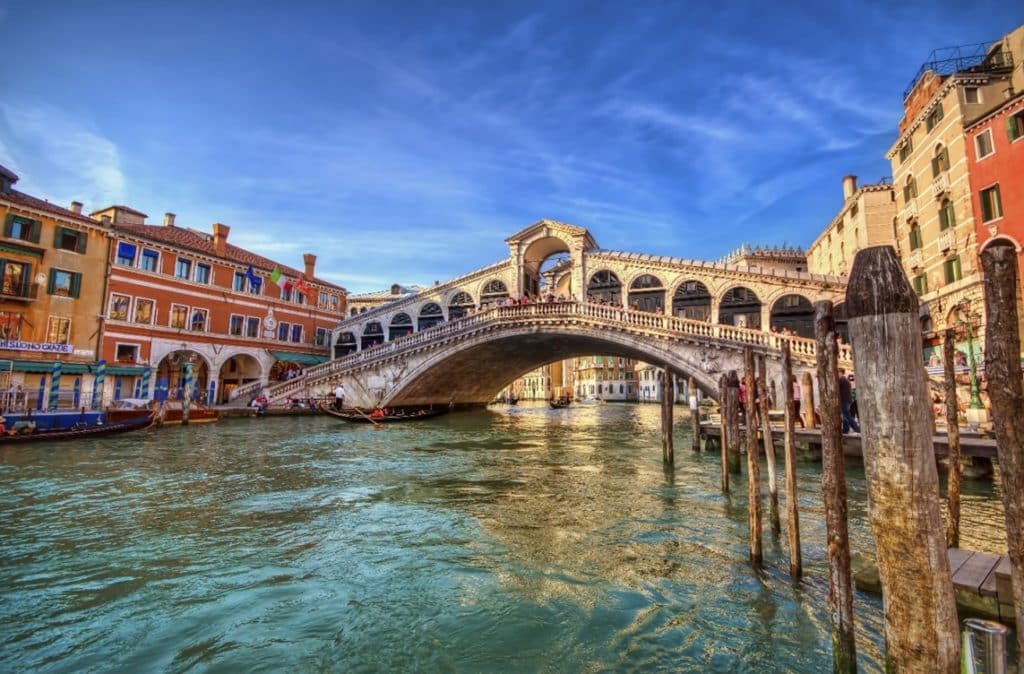
Named after the first district in Venice that was settled during the ninth century, the Rialto Bridge is the oldest of four bridges that cross the Grand Canal. After centuries of faulty wooden bridges, in 1551, authorities requested designs for a bridge to be made of stone. The most famous architects at the time proposed their solutions – even Michelangelo. They were all rejected because they designed bridges with multiple arches. Because the bridge was being built over the narrowest part of the river, multiple arches would hinder the traffic below. Venetian architect, Antonio da Ponte, realized this and designed what we see today. The design was based on the original wood bridge from 1255. The Rialto bridge consists of two inclined ramps with stairs that lead to a central arch. It took only three years to construct and was completed in 1591.
Ponte Sant’Angelo – Rome
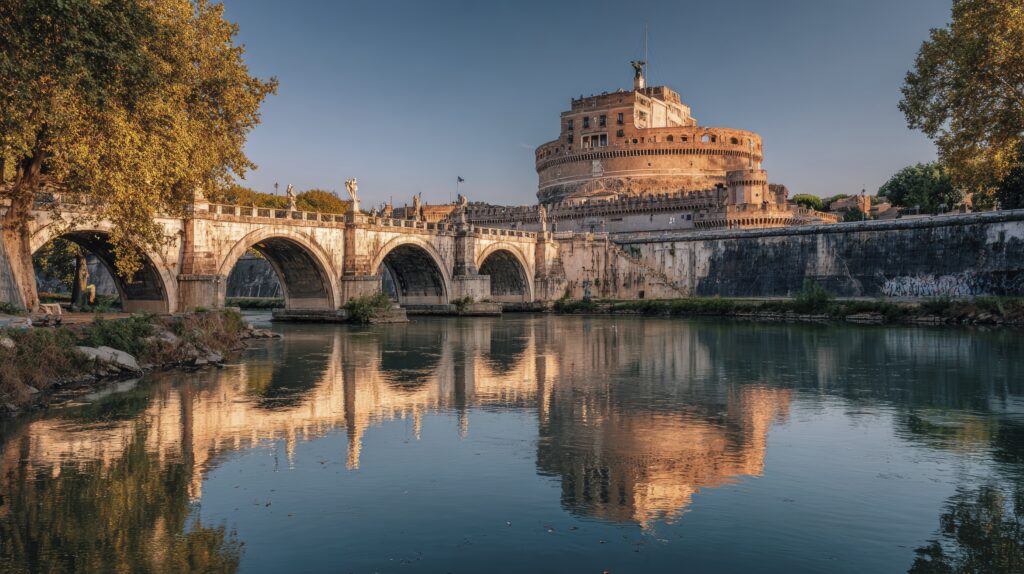
Bridge Sant’Angelo is perhaps the most storied bridge in Italy. Previously called Pons Aelius, the bridge was named after Emperor Aelius Hadrian and designed by his personal architect Demetrianus in 134 A.D. The bridge has 5 arches built across the Tiber River and features 10 angels designed by Gian Lorenzo Bernini. The bridge connects Campus Martius at the left bank of the Tiber River to Hadrian’s Mausoleum. Two centuries after construction, in 590 C.E, the plague was devastating Rome. On the top of Hadrian’s Mausoleum, Pope Gregory I saw an apparition of the Archangel Michael. The angel sheathed a bloody sword, and the Pope took this as a sign that the plague has finally come to an end. After this, Hadrian’s Mausoleum was renamed Castle Sant’Angelo and an angel statue was placed atop of it. Due to its connection to Castle Sant’Angelo, the bridge was referred to as Ponte Sant’Angelo. During the middle-ages, the bridge served as an essential passageway for pilgrims on their way to Saint Peter’s Basilica and Vatican Valley.
At Carroll Engineering, we understand the importance of bridges and structural engineering. We appreciate the significance of these historic bridges and their influence on modern-day engineering and architecture. After reading this blog post, we hope you understand how effective infrastructure connects our modern world to ancient history!
To learn more about our bridge design expertise, as well as our structural engineering services in general, check out our structural engineering services page.
Ready to get started on your next project? Contact us!
